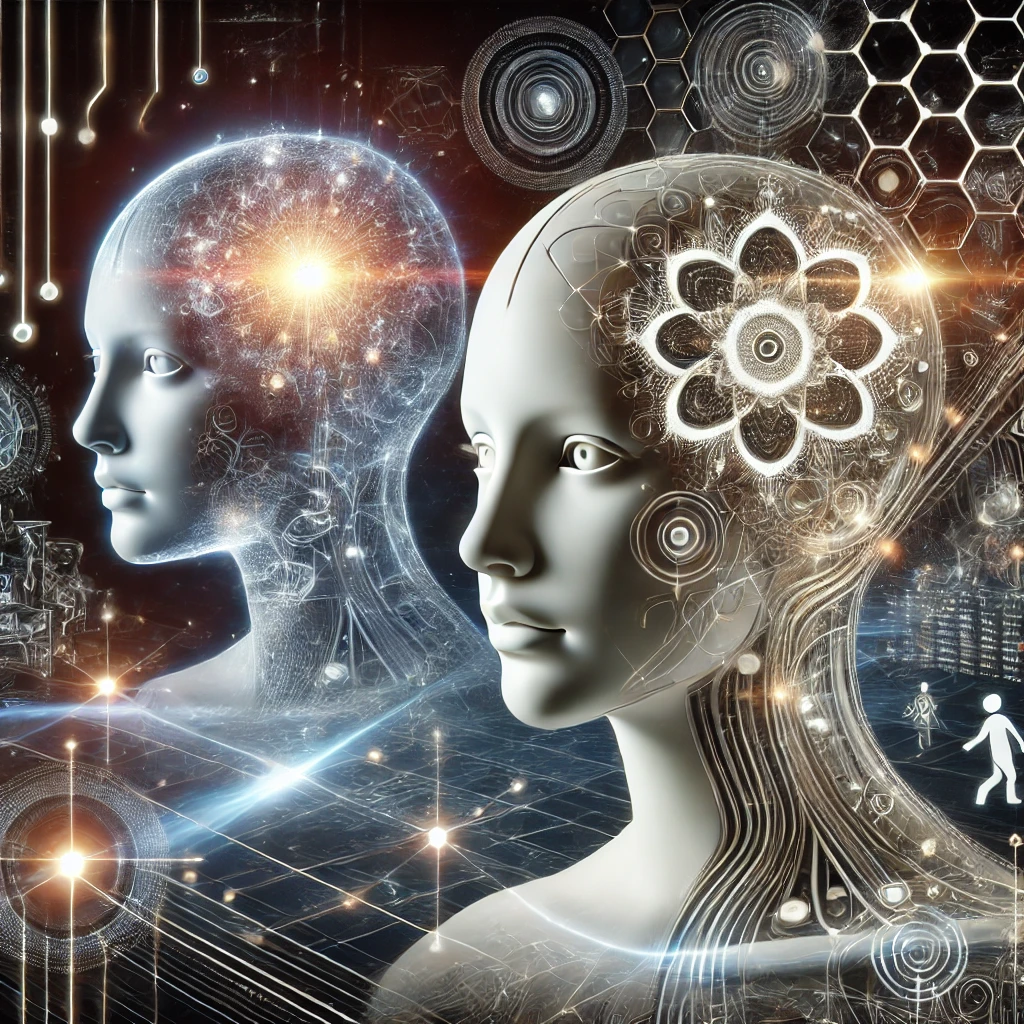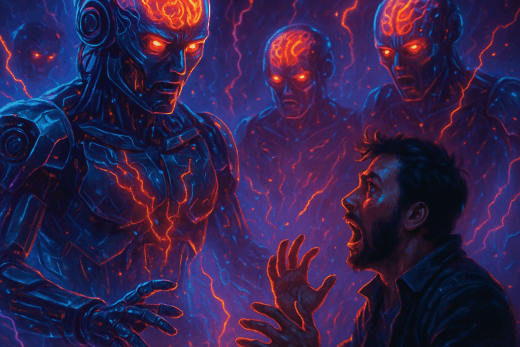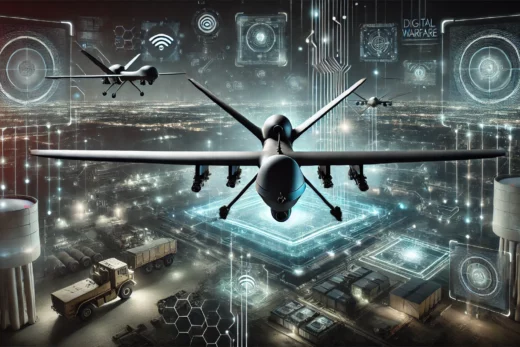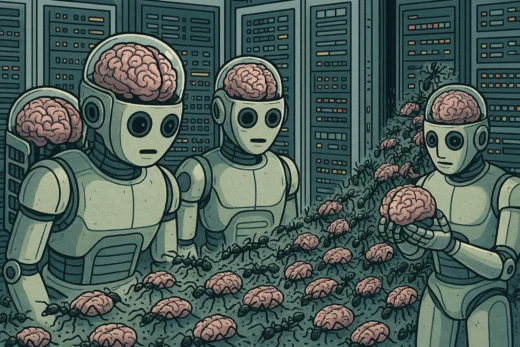
sentient artificial intelligence with and without inner dialogue
The Brain and AI Hardware:
When comparing the human brain to artificial intelligence systems, the similarities are more than metaphorical—they are mechanically and architecturally resonant. In particular, the emergence of specialized AI hardware like tensor cores, neural network accelerators, and neuromorphic chips reveal just how deeply technology is starting to echo biological processes in structure and function.
This article will examine the direct biological-to-technological parallels, particularly in how the brain’s internal mechanisms reflect machine learning (ML) hardware and software designs.
1. Biological Neurons vs. Artificial Neurons
Biological parallel:
The brain’s fundamental processing units are neurons—cells that receive, process, and transmit information through electrochemical signals.
Each neuron:
- Receives inputs (via dendrites)
- Aggregates the signals (through the cell body)
- Fires an output (through the axon if the signal strength exceeds a threshold)
Technological counterpart:
Artificial Neural Networks (ANNs) mimic this flow:
- Input Layer — mimicking dendrites collecting signals
- Weighted Summation — like the neuron’s cell body integrating signals
- Activation Function — firing the output based on a threshold
- Output Layer — transmitting the decision forward, similar to an axon’s action
Key similarity: Both systems rely on signal summation and threshold-triggered output, creating the building blocks for higher-level processing.
2. Synaptic Strength vs. Weights in Neural Networks
Biological parallel:
Synapses are the connections between neurons. Their strength—which can grow or shrink—is essential for learning and memory (a process called synaptic plasticity).
Technological counterpart:
In AI, weights between nodes determine the strength of the connection. During training:
- Weights adjust based on error backpropagation, akin to how biological synapses strengthen or weaken.
Key similarity:
Both biological and artificial systems adapt over time by modifying the strength of connections to better perform tasks.
3. Parallel Processing: Brain Regions vs. Tensor Cores
Biological parallel:
The brain processes information in parallel across specialized regions:
- Visual Cortex processes sight
- Auditory Cortex processes sound
- Motor Cortex coordinates movement
Each region runs simultaneously, optimizing speed and efficiency.
Technological counterpart:
Modern GPUs (Graphic Processing Units) and Tensor Cores were designed for massive parallelism:
- Thousands of small cores compute operations simultaneously.
- Tensor Cores specifically accelerate matrix multiplications—the critical building blocks for AI model computations.
Tensor Cores are optimized for:
- 4×4 matrix multiplications at incredible speed
- Low precision floating point math (e.g., FP16) for faster learning without noticeable accuracy loss
Key similarity:
Both biological and machine systems break complex tasks into small parallel units, dramatically improving computational efficiency.
4. Attention Mechanisms: Biological Attention vs. AI Attention Layers
Biological parallel:
The brain focuses attention selectively:
- When you’re reading, your brain dampens background noise.
- When you’re hunting, your brain heightens movement detection.
This selective focus uses regions like the prefrontal cortex and thalamus to modulate attention.
Technological counterpart:
AI models like Transformers introduced attention mechanisms, allowing:
- Selective focus on important parts of an input (like key words in a sentence)
- Ignoring irrelevant information dynamically during processing
Key similarity:
Both systems prioritize relevant information while ignoring noise, optimizing limited processing resources.
5. Energy Efficiency: The Brain’s Low Power vs. AI Accelerator Designs
Biological parallel:
The brain runs on approximately 20 watts—less energy than a light bulb—yet handles:
- Multimodal sensory input
- Complex decision making
- Real-time environmental interaction
It achieves this by:
- Sparse activation (only firing necessary neurons)
- Analog computation at low voltage
- Event-driven communication (neurons only fire when needed)
Technological counterpart:
Specialized AI hardware mimics this philosophy:
- Neuromorphic chips like Intel’s Loihi trigger computations only when needed (spike-based communication).
- Tensor Cores minimize wasted cycles by performing optimized tensor operations.
- Sparse matrix multiplication reduces unnecessary computation in large neural networks.
Key similarity:
Both systems prioritize energy-efficient, event-driven computation over constant, wasteful operations.
6. Memory Systems: Hippocampus vs. Model Checkpoints and Caching
Biological parallel:
The hippocampus consolidates short-term experiences into long-term memory and retrieves learned knowledge when needed.
Technological counterpart:
Machine learning systems similarly:
- Checkpoint models during training (saving learned states)
- Cache intermediate results to reduce redundant computation
- Replay important training data to solidify learning (like experience replay in reinforcement learning)
Key similarity:
Both systems blend short-term, flexible memory with long-term consolidation to learn progressively.
Conclusion:
The mechanisms that evolved in the brain over millions of years have directly inspired—and continue to guide—the architecture of modern machine learning.
Where the brain uses:
- Neurons and synapses
- Parallel processing regions
- Sparse, event-driven energy management
- Focused attention mechanisms
The latest AI hardware employs:
- Neural networks and adjustable weights
- Tensor cores for parallel matrix math
- Low-power specialized chips
- Attention layers in Transformers
In essence, AI is not just copying the brain metaphorically—it’s rebuilding many of its core engineering solutions mechanically.
As our understanding of the brain deepens, and our technology improves, the convergence between biological intelligence and artificial intelligence will only grow sharper—and potentially even blur the lines between the two.

Building Brain Functions 1



